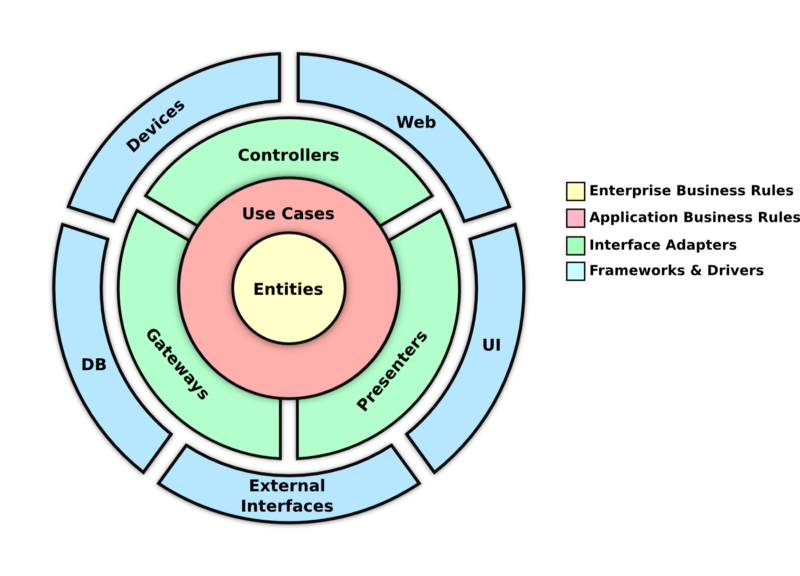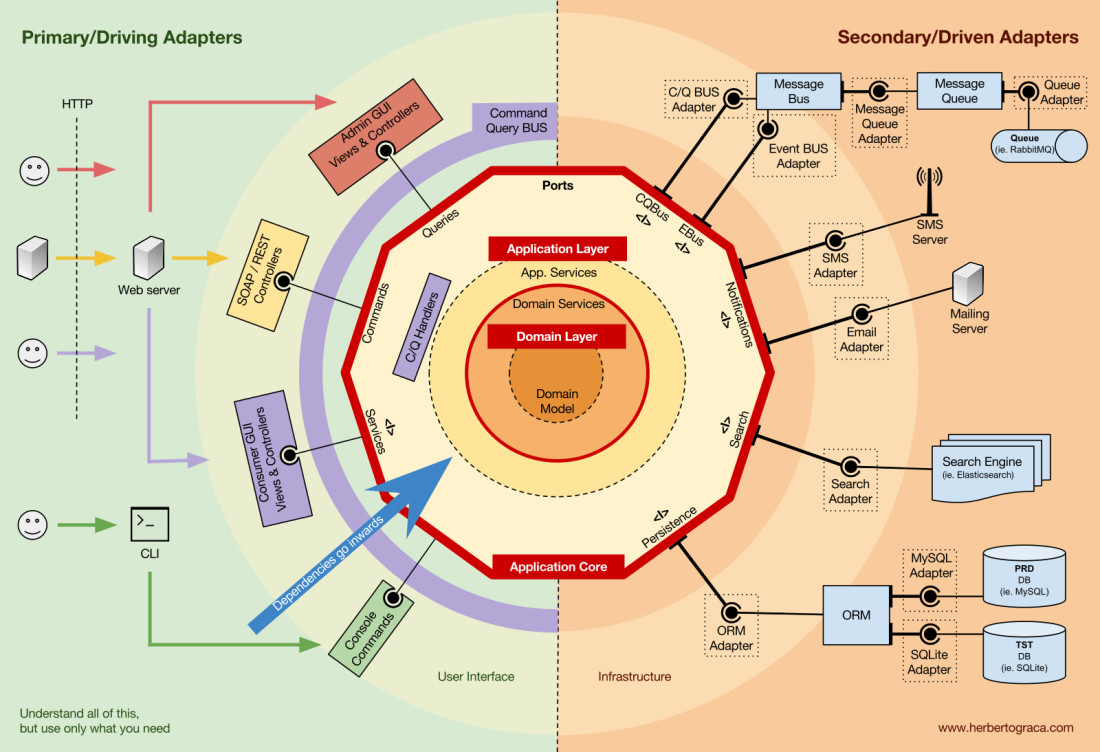Clean architecture and hexagonal architecture are both software design patterns that are commonly used in the development of applications using the C# programming language and the .NET framework. While these two patterns share some similarities, there are also some key differences that are important to understand.
Clean architecture, also known as the onion architecture, is a software design pattern that emphasizes the separation of concerns within an application. It organizes an application's codebase into different layers, with each layer having a specific responsibility. The core of the clean architecture pattern is the separation of the application's business logic from its infrastructure. This allows developers to make changes to the infrastructure without affecting the business logic, and vice versa.

In contrast, hexagonal architecture, also known as the ports and adapters architecture, focuses on the separation of an application's domain logic from its input and output mechanisms. It does this by defining the application's core functionality as a series of ports, or interfaces, that can be used by any external system to interact with the application. This allows developers to easily swap out different input and output mechanisms without affecting the core functionality of the application.
One key difference between clean architecture and hexagonal architecture is the way that they organize an application's codebase. Clean architecture organizes the codebase into different layers, with each layer having a specific responsibility. Hexagonal architecture, on the other hand, organizes the codebase around the application's core functionality and the interfaces that define how that functionality can be accessed by external systems.
Another key difference is the emphasis that each pattern places on the separation of concerns within an application. Clean architecture emphasizes the separation of the application's business logic from its infrastructure, while hexagonal architecture emphasizes the separation of the application's domain logic from its input and output mechanisms.

Overall, clean architecture and hexagonal architecture are both useful software design patterns for developing applications using C# and .NET. While they share some similarities, they also have some key differences that make them well-suited for different types of applications and development scenarios.